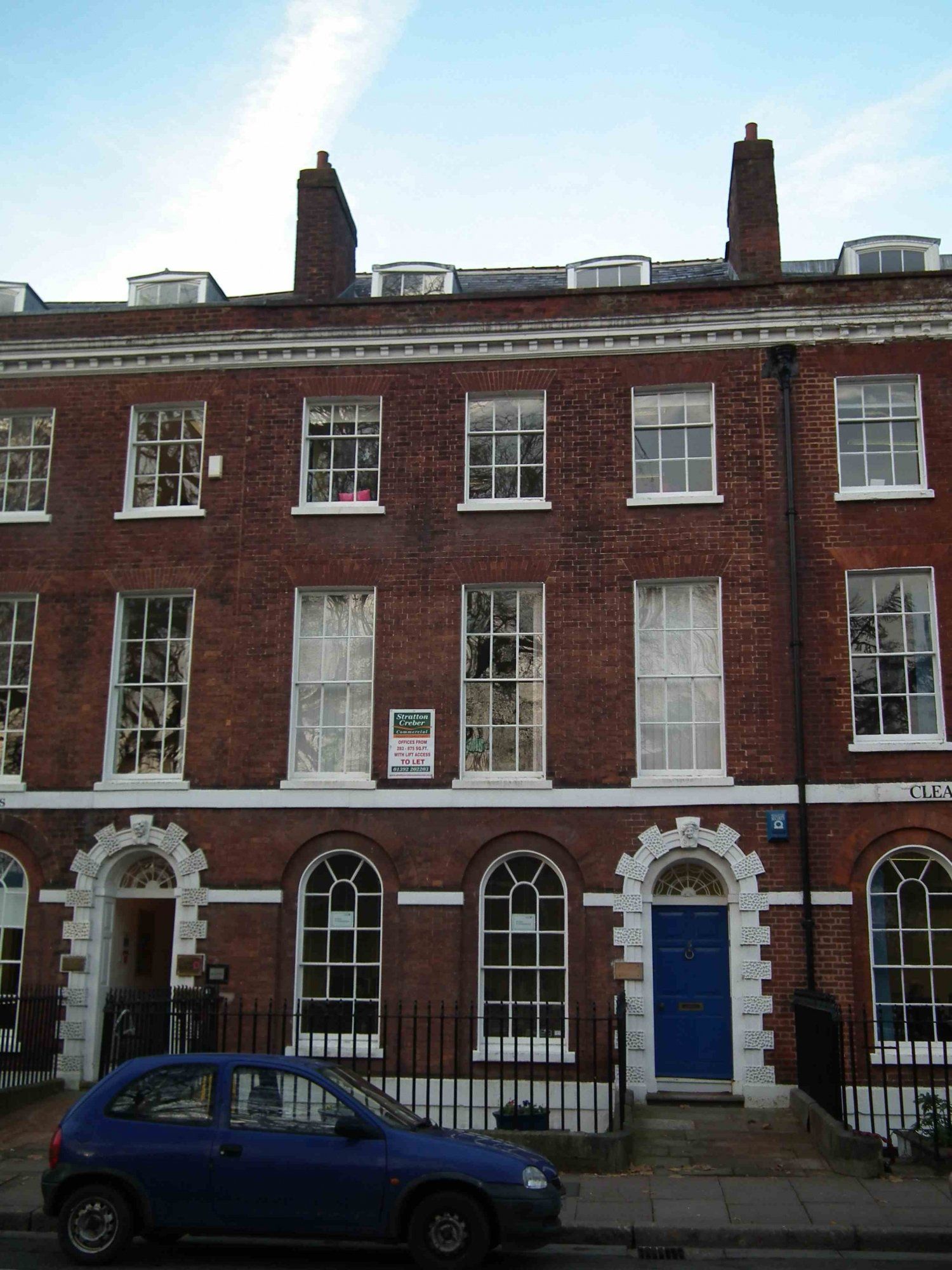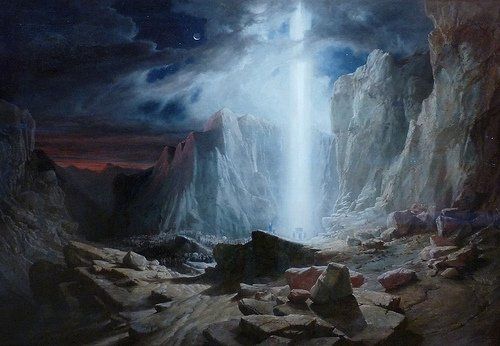Robert Fewings Arscott
Exeter Surgeon John Arscott wrote his will on 4 July 1824. Unmarried, he had no children, but at that time had two nephews: Richard Westlake, born in 1792, the son of his sister Elizabeth and John Westlake, and Robert Fewings Arscott, born in 1802, the son of his half-brother Joseph Fewings Arscott.
Joseph Fewings Arscott (1756-1840) was a collector of excise living on St David's Hill in Exeter. He married Priscilla Milford in 1777. They had two daughters, Priscilla and Mary, and two sons, Joseph and Robert. Both sons trained as surgeons in Exeter. Joseph died in 1823 aged 23 of "dysentery and consumption". He was buried in Zeal Monachorum, his mother's home village.
"Of Sons the most dutiful
Of Brothers the most affectionate
Of Friends the most sincere"
Although in his will John Arscott left one thousand pounds to his nephew Richard, the wording of the will was "if the said Richard Westlake shall be then living ". He must have realised that Richard was ill; in fact Richard died just 13 days later. John Arscott died in Bow four months later on 17 November 1824 and was buried in Sampford Courtenay, his birthplace. All his property in Bow, including Fair Park, was left in trust to his other nephew Robert Fewings Arscott and his heirs.
Robert Arscott inherited Fair Park in 1824, and although he probably never lived in Bow, he took the rental income for the rest of his life. As a freeholder in Bow, he was entitled to a vote in General Elections.

Robert Fewings Arscott was born in Exeter in 1802. He was a pupil for five years in the Devon and Exeter Hospital, when it had a recognised Medical School. After his training in Exeter he continued his studies at Guy's and St Thomas's Hospitals in London, where he worked for a short while before returning to private practice in Exeter in about 1826. He was appointed to care for the poor suffering from Cholera during the epidemic which occured in Exeter in 1832, although he resigned a month after the outbreak started. On the death of Mr Samuel Luscombe Jr in 1841, he applied for the vacant position as surgeon in the Devon and Exeter Hospital, but was not appointed. The same year he married Penelope Shepherd nee Causey, a widow. They had two children, Penelope Margaretta Causey Arscott and Thomas Reynolds Arscott. In 1849 his wife Penelope died. In 1862 Robert Arscott remarried in Streatham to Elizabeth Mary Bulpin. They had a further son, Robert Richard Arscott, born in Exeter in 1866 and who died a bachelor at the age of 37.
In 1845 Robert Arscott became a founder member of the Devon and Exeter Association of General Practitioners, affiliated to the National Association of General Practitioners of Medicine, Surgery and Midwifery, which only existed for a couple of years. General Practitioners, the largest group of doctors, had no organisation to represent them until over a hundred years later the Royal College of General Practitioners was established in 1952.
In July 1860, he was sued by his next door neighbour Thomas Julius Bremridge, a lawyer, to recover damages for keeping a noisy cock. The case had excited great interest. At the request of the plaintiff a jury of a different class from those generally empanelled the County Court cases was summoned, the plaintiff being of opinion that gentlemen unaccustomed to hear cock-crowing the morning should try the case. The matter, however, was settled out of court, and several who attended the court that morning to hear the details were “grievously disappointed”.
In 1863 he was summoned to face a charge of an unprovoked assault on Captain Thomas Elphinstone Stone. Stone at that time was suing his wife for divorce, claiming adultery with Robert Appleton, a Budleigh Salterton Surgeon who, on being cited, had run off to America.
A “large and fashionable audience” turned up for the court hearing but they were again disappointed - Arscott had settled and did not appear, sending his solicitor. The rumour was that Capt. Stone persisted in paying his addresses to a young lady, to whom Mr. Arscott was guardian, and that this persistence it was that brought upon him the summary interference.
He died at his home of over 35 years, No 5 Southernhay, Exeter, aged 76 in 1878. Most of his inheritance passed to his wife, except the remaining years' lease on his home, and the property he owned including that in Bow which passed to his son Thomas Reynolds Arscott.
His collection of paintings and other items was auctioned after his death.
The chief attractions for persons of wealth and taste were the oil paintings, but besides them there was a quantity of antique silver-plate, old China, surgical instruments and a professional library. The paintings included an exquisite oil painting of horses by Albert Cuyp.
Two works that then adorned the walls of his house were "River boating scenes," the work of J. Maris and “The Israelites passing through the Wilderness preceded by the Pillar of Light” by William West.

Above: 5 Southernhay - Robert Arscott's residence
Below “The Israelites passing through the Wilderness preceded by the Pillar of Light” by William West.

"The Teign," "Plymouth Sound," " Mouth of the Teign," the latter painted more than forty years earlier, were the work of Thomas Luny, a Devonshire artist well-known to Teignmouth in his day, and whose works were coming to be more valued as they were better known. Another from the pencil of Luny, was a sketch from St. Helena, the harbour, the shipping beyond, the lofty cliffs: “such a scene from the mid-ocean island as is seldom met with".
Melchior d'Hondecoete's “Poultry Yard”, and Saywell, believed to be another West County artist, was represented here in two of his works, one "The Teign with Cattle", the other, the "Deer Stalker."
Amongst the curiosities that were offered for sale at the same time were a stuffed crocodile and armadillo, and the ears of John Holloway, a murderer who was executed in December 1831. Holloway had confessed to strangling, then dismembering his pregnant wife Celia in Rottingdean near Brighton. With his girlfriend Ann Kennet’s assistance and under the cover of darkness he took the trunk and thighs in a wheelbarrow to a copse where he dug a shallow grave which was discovered four weeks later. The head and remaining parts of her limbs were eventually found in the privy of Holloway’s lodging house. He was sentenced to be hanged and for his body to be given to surgeons at the County Hospital in Brighton for dissection. Ann Kennet gave birth to a boy the following March in Horsham Gaol, and was later acquitted of all charges. How Richard Arscott ended up in possession of a jar containing Holloway’s ears is unclear.
Also up for sale was the pair of pistols used in in 1833 in the duel between Sir John William Jeffcott (b 1796) and Dr Peter Hennis. Both were from Ireland. 31-year old Hennis had lived in Exeter for several years and was recognised as having worked tirelessly in the previous year’s cholera outbreak. Jeffcott was Chief Justice in Sierra Leone.
Affair of Honour.
Jeffcott had recently been knighted in London. He accused Hennis of spreading malicious rumours that may have impeded his planned marriage to the granddaughter of Flora MacDonald (c.f. Bonnie Prince Charlie). Her family lived in Exeter and Hennis was their doctor. Apparently the wedding cake had been ordered. Jeffcott did not accept Hennis’s explanations and called him a “d____d caluminating scoundrel”, and would not retract this.
Hennis then challenged him to a duel. They met at Haldon Racecourse on the afternoon of 10 May 1833.
Jeffcott fired his pistol on the word “Prepare”, Hennis did not fire and was shot in the right side. Mr John Edye, a colleague and surgeon at the Devon and Exeter Hospital rendered assistance at the scene. Hennis was taken back to his lodgings in Exeter, having first forgiven his opponent, who went on to Plymouth and, as planned, next day sailed back to Sierra Leone on the Britomart.
Hennis died 8 days later. There was a very large attendance at his funeral.
The post mortem examination by Dr Shapter, witnessed by most of Hennis’s colleagues who had attended him after the shooting, showed that the lead shot was lodged in the base of a very inflamed left lung. Surprisingly a small piece of flint (similar to that found on Haldon) was also found in the chest cavity; it was suggested that this could only have entered the body with the bullet.
Hennis had been due to marry one of the daughters of Rev William Clack of Moretonhampstead that June.
A year later Jeffcott was removed from his post in Africa and returned to Exeter to face trial. The prosecution offered no evidence and he was acquitted. In 1836 he was appointed Chief Judge in South Australia where, less than a year after taking up his post, he drowned in a boating accident in the mouth of the Murray River near Adelaide. His body was never found.
Back to John Arscott - his uncle Thomas Reynolds Arscott - his son
by Peter Selley
